This project goes by the title “Shipyard Taiwan.” As you probably have already guessed, it’s a Taiwanese shipyard, one that’s designed, planned, and visualized by Motion Code Blue . Built onto and into an existing u-shaped hall and production building for motor yachts, this project aims to add an office building, green and recreational spaces, and a showroom. And in the vein of near-impossible design requirements the world over, the commissioner asks MCB to give this project “landmark-like characteristics.” It’s sort of like saying “make it godly, please.”
Inside this structure you’ll find VIP-areas, meeting rooms, offices for employees and CEOs, terraces, a yoga room and language course facilities. In the lower levels theres a kitchen area, staff restaurants and a cafeteria. The entrance area connects the showroom with the VIP-areas and office wing, with much fantastically beautiful room for walking around, buying up all kinds of boats.
Multimedia walls accent the intentionally neutral space, highlighting the boats – the heart of the complex. Meant for everything from launch parties to press events to public presentations. The main show area can show a max of three 50 feet yachts at once.
Outdoor areas also show the boats as the whole thing is basically made of windows. Outside there’s space for BBQ, relaxing, or just jamming about, thinking about all the boats you’re gonna buy.
Designer: Motion Code Blue
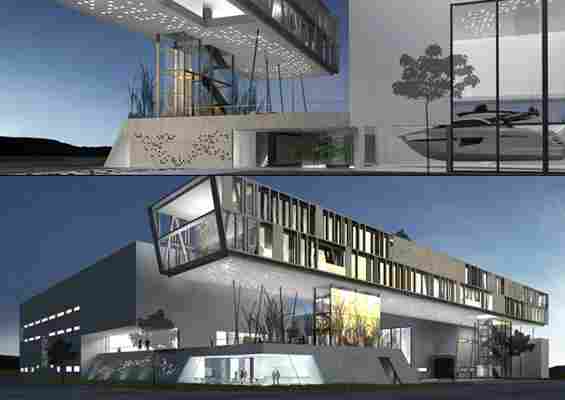
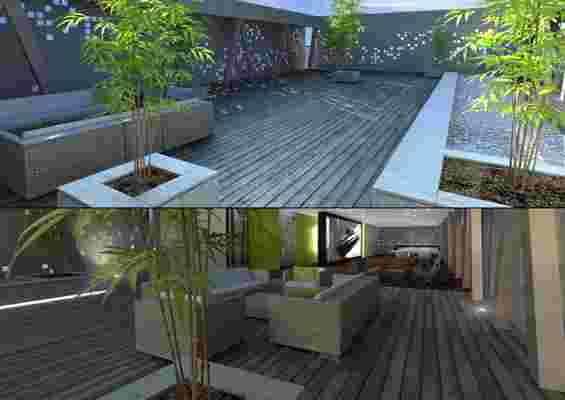
This 3D printed portable toilet is made from recycled plastic!
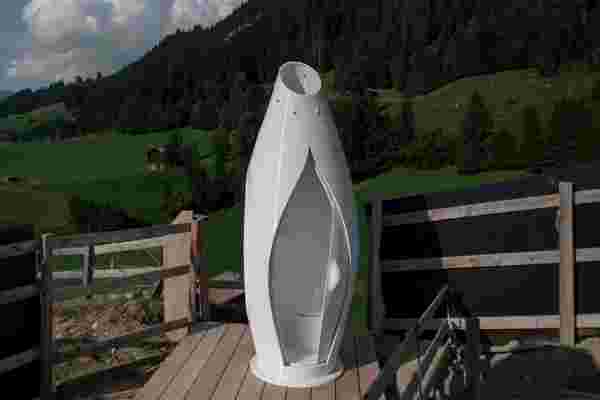
This sustainable toilet is designed to compost solid waste while also tackling the sanitation crisis – using design and technology to do good sh*t! It is a solution that eradicates plastic waste and turns it into a construction material that reduces the load on landfills. The portable toilet is also absolutely beautiful with its white aesthetic and cocoon form! The first 3D printed prototype was produced by an advanced seven-axis robotic printer and is being tested on a construction site in the Swiss Alps.
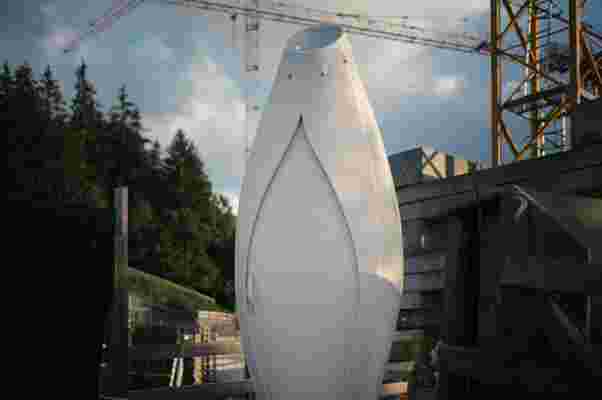
Created by Spanish design studio Nagami and To: it has been dubbed The Throne and it comprises three parts – a teardrop-shaped body, a dramatic, double-curved sliding door, and a bucket for solid waste. All the parts were printed within three days, including the base and some smaller accessories that were either injection-molded or ordered. It also includes an off-the-shelf separation toilet seat to separate urine from solids for composting.
For the prototype, the teams used discarded plastic medical equipment from European hospitals. “Our treatment of waste, both human and artificial, has a profound impact on the future of humanity and our planet. Since the 1950s roughly 8.3 billion metric tonnes of plastic has been produced, and only around 9% of this has been recycled; the remainder have been incinerated, piled into landfills, or dumped in our oceans,” said Nachson Mimran, CEO and co-founder of To: Creative Activists.
“The 3D printed Throne has been an incredible challenge for us, working with mechanics, sliding doors, and off-the-shelf products such as a separate toilet. These design components forced us to think in a different, utilitarian way which really makes this proof of concept special,” said Manuel Jiménez García, CEO and co-founder of Nagami.
The Throne goes further in its realization of a circular economy by composting the waste produced by users and using this compost locally. Eventually, the teams want to put the technologies and tools in the hands of local communities. When innovation is shared fairly and the carbon footprint created by logistics and shipping of these products can be greatly reduced. The Throne is just one example of the possibilities of what additive manufacturing can do for scaling sustainable design and development – it’s only waste if you waste it!
Designer: Nagami and To:
This tiny home on wheels uses colourful windows to create a fun space for a young family
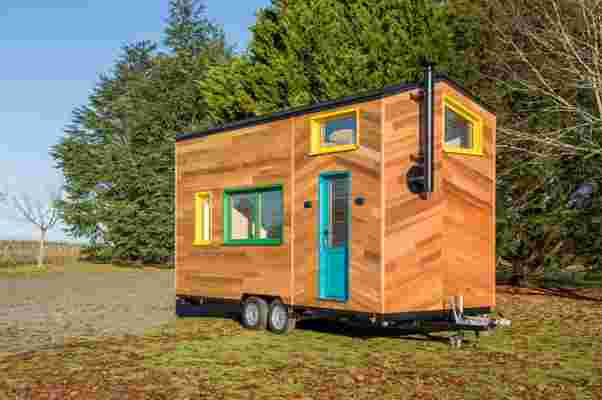
Planedennig is a tiny home on wheels built for a mother and her young son to balance playtime with relaxation.
Considering the number of tiny homes to come out of recent years, distinguishing one tiny home from another can be hard. After all, there’s only so much space to work with, many tiny home builders prioritize efficiency and function over unique design. Then, there are always the unicorns that have it all.
Designer: Baluchon
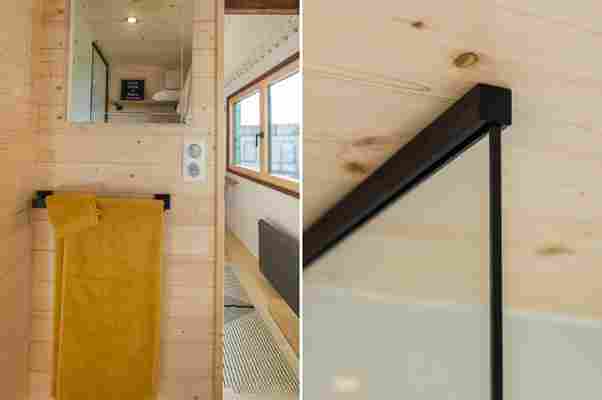
No stranger to unicorns, Baluchon is a tiny home company co-founded by Laëtitia and Vincent who devote their time to building tiny houses on wheels for clients and their various needs. Planedennig, a tiny house on wheels built for a mother and her young son, finds some pizzazz with a colorful exterior and functionality with a multifunctional interior.
Planedennig, which translates to ‘little planet’ in Breton, was designed and built for Gaël and Eflamm, a mother and her young son, to have a place for living and for play. Defined by its colorful joinery that punctuates the exterior, Planedennig’s outer facade keeps a cedar finish that helps calm the playful energy. Measuring a total length of only six feet, Planedennig has a unique layout that makes the most of the tiny home’s interior volume.
While there is no integrated off-grid technology, Planedennig only requires a standard RV-style hookup to power up all of its amenities. The home’s entrance is located in the kitchen, right beside the wall-mounted, wood-burning stove. Upon entering Planedennig, residents are immediately welcomed with a window opposite the entrance that brings in views of the outdoors
Right below the kitchen window, residents enjoy a full kitchen, equipped with a sink, two-burner propane-powered stovetop, dining table, refrigerator and freezer, an oven, as well as ample storage space for appliances and kitchenware.
Right next door to the kitchen, a cozy living area leaves space for a roomy couch and small reading nook. Then, when the pull-out couch isn’t in use, guests enter the bathroom from the living room, where they will find a toilet, storage space, and a small hip bath and shower.
Upstairs, Gaël and Eflamm find their respective bedrooms. Accessible via a staircase next to the kitchen, Gaël’s bedroom is a small loft bedroom with a double bed. Then, a netted play area connects to Eflamm’s bedroom, where a twin mattress cozies beneath an expansive pentagonal window.
The kitchen blends seamlessly with the living area which is connected to the full-size bathroom.
The upstairs children’s bedroom is a lofted area with enough room for a twin-sized bed and a few pieces of furniture.












